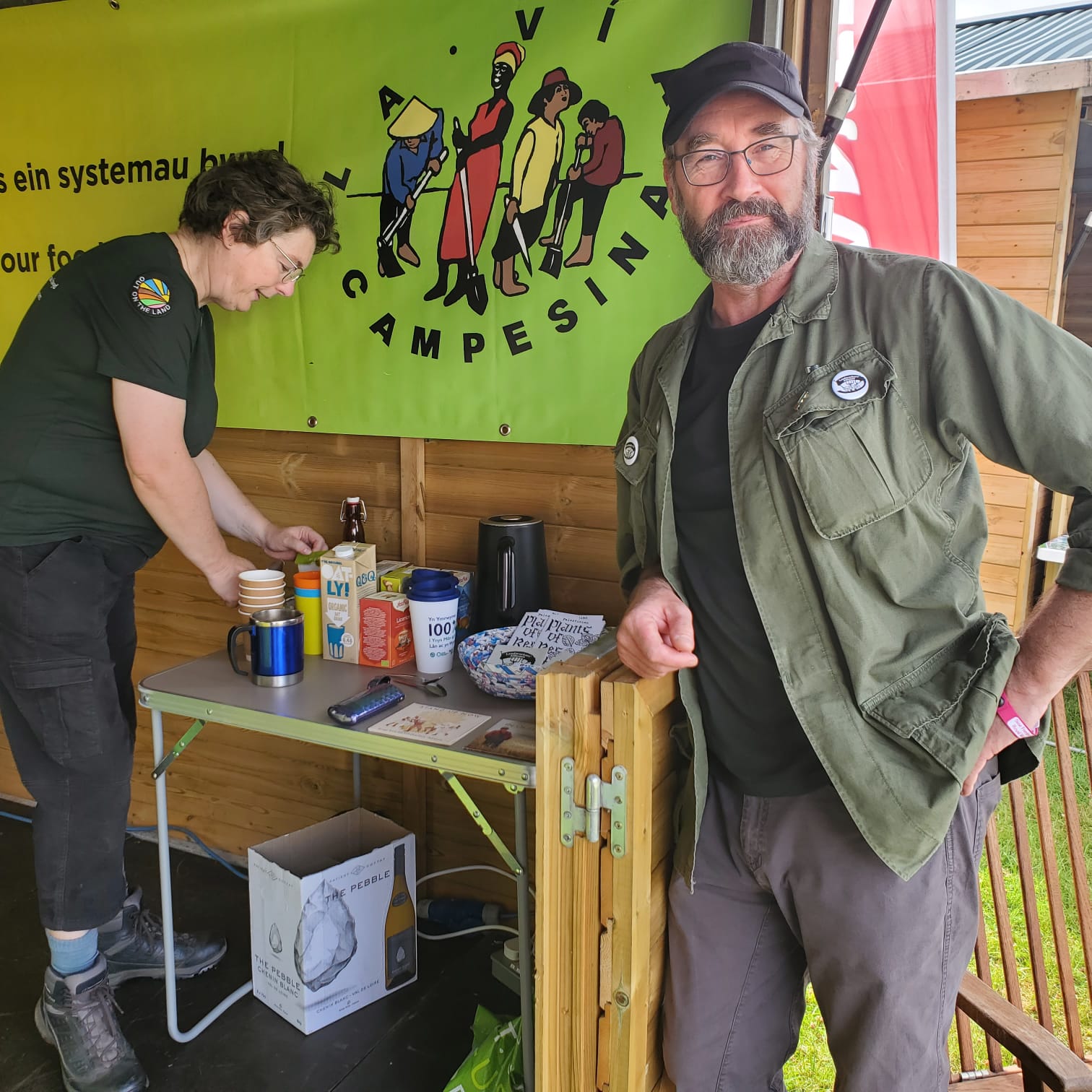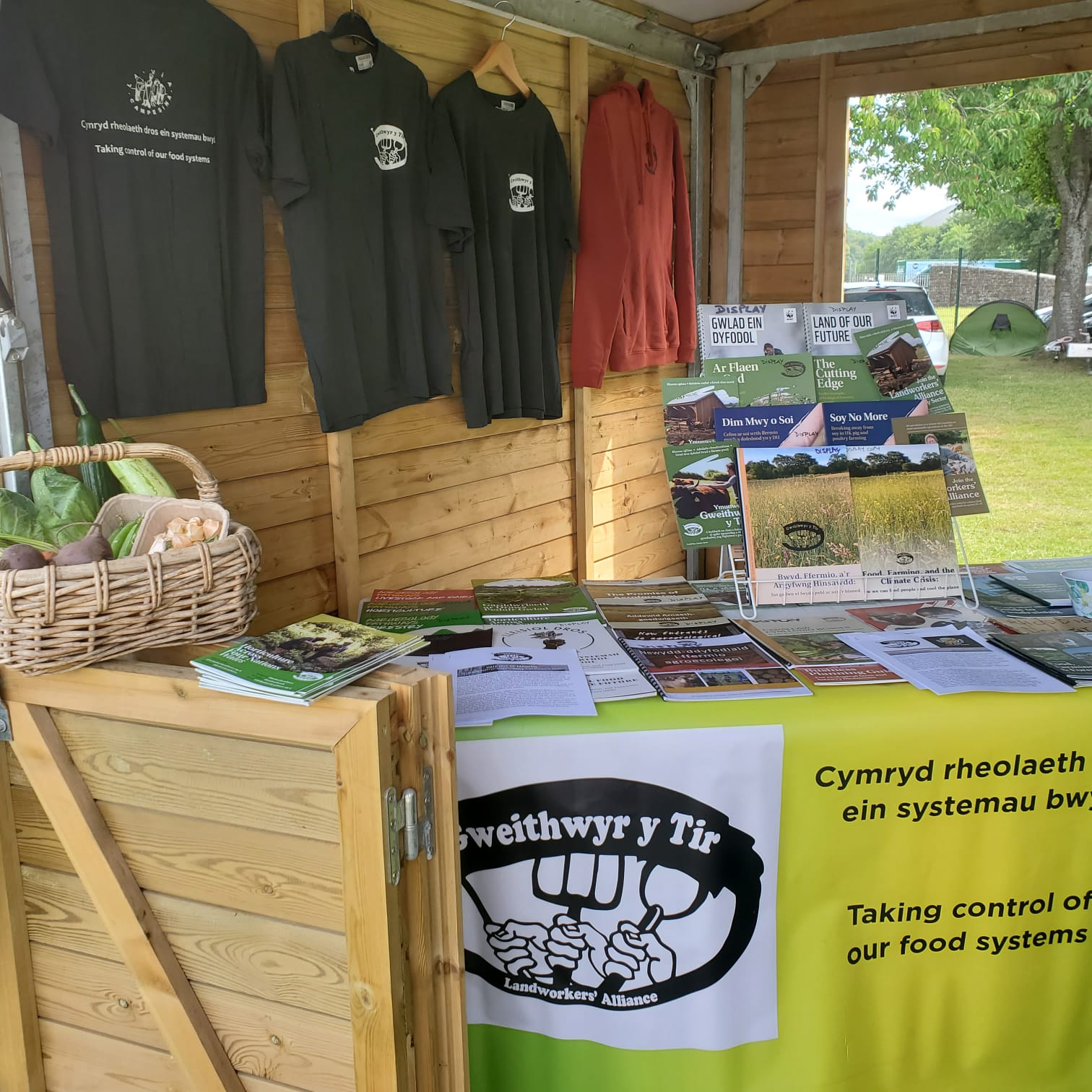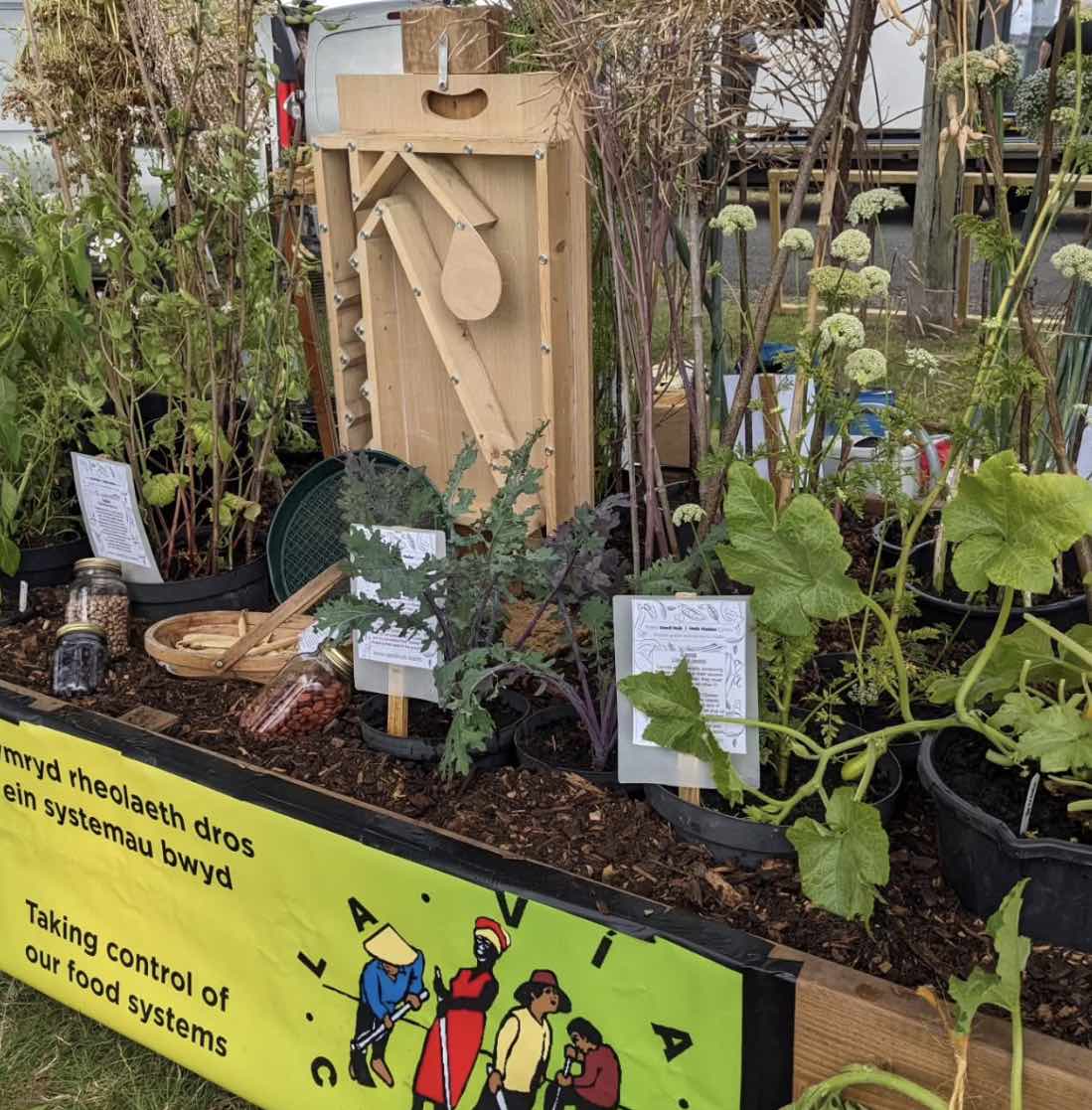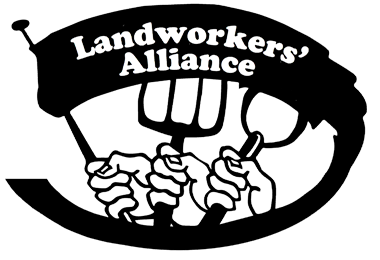Ar gyfer y Gymraeg, defnyddiwch ein gwasanaeth cyfieithu drwy glicio’r botwm ‘ENG’ yng nghornel dde isaf eich sgrin, a dewis ‘Welsh’.
The Royal Welsh Agricultural Show (RWAS) has been running for over 120 years and has been based at Builth Wells in mid Wales since the early 1960s. This year’s show welcomed over 200,000 visitors across four days and LWA Cymru was there throughout. In this blog post our Cymru (Wales) Policy and Campaigns Coordinator, Ian, reflects on his time at the show, as well as some of the announcements that were made regarding the future of farm payments in Wales.
The Royal Welsh Agricultural Show (commonly referred to as ‘Y Sioe’ / ‘The Show’) started out as a platform to showcase Welsh farming – from its livestock breeds to its technology. It still maintains that traditional function today, with competitions and exhibitions covering everything from the celebrated ‘Welsh Cob Wednesday’ – when fifty stallions trot around the ring with flared nostrils guided by their waistcoated handlers – to the machinery and tractor stands where farmers and their families climb on larger tractors each year.
The Show is an important space for the rural communities of Wales and its central function in providing cultural cohesion is evident from the fact that every other conversation around the visitor takes place in Cymraeg, the Welsh Language. There’s also a very strong sense of pride around the living and heritage rural skills and livestock competitions and exhibitions. However, as you wander around the Showground, that emphasis on the traditional and artisanal often jars with the stalls selling plastic toys and garden furniture, and the seemingly ubiquitous presence of the Armed Services and their recruiting tents.
There’s a bit of a museum feeling to some of the RWAS displays. Marginal and preindustrial rural traditions such as hedge laying and coracle (traditional boat) building pull in the curious for sure. But that historical narrative contrasts sharply with the main technological attractions at the Show which promote fossil-fuelled big-ag machinery. Sitting alongside the few remaining immaculate and diminutive ‘classic’ tractors that once flooded the UK countryside on the back of the post-War Marshall Plan, there are marketing stands for tractors and kit that would require the average field gate of Wales to be doubled in size. Thus, RWAS also gives us a window onto the industrialisation process that has overtaken ‘conventional farming’ since the end of WWII. I live about 10 minutes South of the permanent Showground at Builth Wells. As I drive the perimeter road in the days building up to the show, the gathering of huge, shiny farm machinery looks like a festival for ‘soil compactors anonymous’!
Inevitably, over time, RWAS has been pushed beyond farming to feature broader, and often contradictory, rural interests. From the cage-full of dozing foxhounds at the Countryside Alliance stall, to the family-friendly membership recruiting tent of the RSPB, this year’s Show again testified to the strained societal dynamics of modernity’s rural landscape and its stakeholders. The contested nature of our rural issues was brought sharply into focus by this being the final RWAS before the next Welsh Senedd (Parliament) elections in May 2026. The Show was peppered with stands for the mainstream political parties and their associated pressure groups.
This year, LWA Cymru was fortunate to share a space in the Show’s ‘Horticultural Village’ with our friends from the Soil Association, LANTRA and Food Sense Wales. We were at the quieter end of the Showground – linked to a beautiful display garden from LWA members associated with the Wales Seed Hub/Hwb Hadau Cymru – but together we made sure that the voices of organic and agroecological farmers in Wales were taking up space and being heard.
Sustainable Farming Scheme (SFS) updates
The post-Devolution Welsh Government, picking up from UK ministerial habits, has used RWAS as a platform to launch policies and initiatives since its inception. Most of the political farming focus this year was on the emerging Sustainable Farming Scheme (Wales’ proposed replacement for Basic Payments Scheme and other legacy CAP support mechanisms for agri-environmental payments), which is due to be rolled out in January 2026.
The Universal Layer requirements to qualify for SFS were solidified before and during RWAS, and the next steps of clarifying Optional and Collaborative Layers will unfold over the coming year. LWA Cymru will be working with other groups such as Food Policy Alliance Wales (FPAC) to maximise support for horticulture and agroecology within the Optional and Collaborative Layers.
Labour-hours worked eligibility criteria
The good news for some LWA members, reflecting the hard work of our LWA Cymru campaign and lobbying work, is that the SFS landholding qualification has been set at a minimum size of 3ha of agricultural land and/or, for those in horticulture especially, 550 demonstrable standard labour hours. This ‘labour hours worked’ eligibility criteria is a huge step forward in terms of shifting away from area-based eligibility, towards a framework that recognises the productivity and employment generated by small farms and market gardens.
However, the disappointing news is that the SFS will still be area-based in terms of payments (i.e. payments will be issued per hectare) which may impact members’ willingness and desire to join the scheme. For example, the Universal Layer (which is mandatory for any farm enrolling in the SFS) will issue payments on a whole-farm basis, paying £70 per hectare for the first year. This means that for a 2 hectare market garden, all the time and paperwork of submitting an application might only amount to a £140 payment for the whole year.
Moving forward we will be working with our campaigning partners to promote a fairer system of non-area based payments of horticulture support from Welsh Government. These might include a variable rate based on estimated labour hours – which could be based on a formula that assumes a certain level of work for a certain volume or area of different produce – or a flat rate if an estimated hours worked model would be too complicated. We will also be taking inspiration for how payments can work for smaller-scale growers from our ‘Growing the Goods’ Test and Trial final report, conducted by LWA’s very own Rebecca Laughton for the English context.
Organic Conversion Scheme
On other encouraging fronts, Welsh Government announced a second window for its Organic Conversion Scheme to support conventional farmers and growers who want to move towards organic systems of food production. Farming Connect, the Welsh Government’s Lantra-facilitated CPD body for farming, have produced a handy guide to that process and its requirements. You can apply for the scheme via the Single Application Form on the government website.
Looking ahead
If we are going to shift towards more resilient and localised food webs in Wales, the answers will be found in supporting smaller-scale farms working with nature to produce food for their communities – not in the type of hi-tech conventional farming that continues to play a central role at RWAS.
In the year ahead we will be working to advocate for the needs of our members in Wales, and be part of a broader shift for a more progressive food and farming system in Wales.
If any member of LWA was at RWAS, or has any ideas about how LWA Cymru can challenge agribusiness around RWAS with our own ethos of agroecology, we would welcome your views; please send your thoughts to ian.j.rappel@landworkersalliance.org.uk.

Gweithwyr y Tir (LWA Cymru) stall in the Horticulture Village



